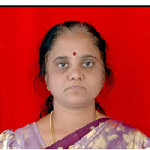
Title: Exothermic Chemical Reaction of Nanofluid-Saturated Porous Layer: Stability Analysis
Keynote
Prof. J.C. Umavathi
Gulbarga University, India
Abstract
The interaction of exothermic chemical reaction and the natural thermo-solutal convection in a horizontal sparsely packed inert nanofluid-saturated sandwich porous layer cooled from the top boundary with fluid viscosity different from the effective viscosity is investigated. The Brinkman model is engaged for the porous medium hydrodynamics, while the nanofluid model features the Buongerno model. To figure out the stability of the linear terms, normal mode analysis is opted Galerkin method is selected to solve the nonlinear terms. The Rayleigh number and its relevant wave number are assessed on all the dimensionless parameters and exposed in the form of graphs. The viscosity ratio setback the convection to set on and Frank–Kamenetskii number is identified which cause the system to be atmost unstable. The results achieved are applicable in nano-doped geothermal energy extraction.
Biography
Prof. J.C. Umavathi, Gulbarga University, India J.C. Umavathi completed her Post Doctral from the Department of Engineering, University of Sannio, Piazza Roma 21, 82100 Benevento, Italy. She is working as Professor in the Department of mathematics, Gulbarga University since 1993. She has published more than 235 research articles in reputed international journals. She is a recipient of Kalpana Chawla Young Scientist award, Sir J.C. Bose award and Erasmus Mundus Fellowship.
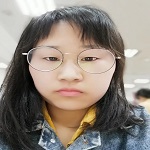
Title: The Gevrey Normalization for Quasi-Periodic Systems Under Siegel Type Small Divisor Conditions
Speaker
Dr. Shoujun Xu
Southeast University, China
Abstract
Here we investigate the Gevrey normalization for quasi-periodic systems by the Siegel type small divisor condition. More precisely, we provide a sharper expression of the loss of the regularity by the lowest order of resonant terms together with indices of Gevrey smoothness and Siegel type condition in the original systems. The tool utilized here is the KAM method in the Banach space fixed with weighted norms. Previous results have shown that ultradifferential topology is proper to analysis the‘invisible’ of small divisors in the C^{infty} topology and quantitatively describe the non-resonant terms of autonomous normal forms beyond the analytic topology. Furthermore, our results indicate its wide application in non-autonomous ormalization. Without altering the angle part, the (formal) Gevrey norm can be established completely on the Fourier-Taylor expansions as the analytic case. At the same time, the quantitative connections between the order of non-resonant terms and indices of small divisors and the ultra-differential smoothness also can be detected. Moreover, our experiments remind us that the loss of smoothness raised from the small divisor in the normal direction may largely cover the one in the tangent direction. So, it is possible to seek similar phenomena in the study of the normalization for general non-autonomous systems admitting the (non)-uniformly exponential dichotomy spectrum, provided that the sub-exponential part is characterized quantitatively. Therefore, it is attractive to investigate ultradifferential normalization for non-autonomous systems.
Biography
Dr. Shoujun Xu is under her Ph.D. from the Department of Mathematics, Southeast University, People. Republic of China. She has published one paper in the Journal of Differential Equations, and three are in review

Title: G-Quadruplex Microspheres-Based Optical RNA Biosensor for Arthropod-borne Virus Pathogen Detection: A Proof-Of-Concept with Dengue Serotype 2
Speaker
Dr. Ling Ling Tan
Institute for Environment and Development, Malaysia
Abstract
Dengue virus (DENV) is a positive-sense single-stranded RNA virus and that the detection of viral RNA itself is highly desirable, which can be achieved by using RNA biosensor diagnostic method. Herein, acrylic micropolymer-based optical RNA biosensor was developed by binding anionic copper(II) phthalocyanine (CPC) planar aromatic ligand to the G-quadruplex DNA probe via end-stacking with p-system of the guanine (G) quartet, and a blue coloration was developed on the G-quadruplex microspheres. Hybridization of G-quadruplex DNA probe with target DENV serotype 2 (DENV2) RNA unfolded the G-quadruplex, and rendering release of the CPC planar optical label, causing discoloration of the G-quadruplex microbiosensor. Optical characterization of the RNA biosensor was performed by means of fibre optic reflectance spectrophotometer at maximum reflectance wavelength of 774 nm. The reflectance response enhancement of the RNA-responsive G-quadruplex-based reflectometric biosensor was linearly proportional to the target oligo DENV2 RNA concentration in the range of 2 zM-2 µM, with a 0.447 zM limit of detection and a rapid response time of 30 min. Heightening in the reflectance signal based on structural transition of G-quadruplex in response to target RNA was successfully implemented in real-time DENV2 detection in non-invasive human fluid samples (i.e. saliva and urine) under informed consent.
Biography
Dr. Ling Ling Tan received her first-class honours BSc Degree in Chemical Technology in 2006 and PhD Degree in Chemistry in 2009 in the areas of optical chemical sensor and electrochemical biosensors from Universiti Kebangsaan Malaysia (UKM). During her PhD study, she attached to the National University of Singapore for collaborative research work in the areas of electrochemistry and analytical chemistry. Presently she is a Senior Lecturer/Research Fellow at Institute for Environment and Development. UKM. Her research focuses on developing highly sensitive nanoscale analytical devices based on advanced materials and their functionalized derivatives.
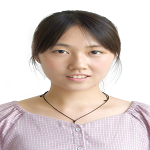
Title: Persistence of Degenerate Invariant Tori Forreversible Systems with Multiscale Degenerate Equilibrium Points
Speaker
Dr. Ru Qu
Southeast University, China
Abstract
We focus on the persistence of degenerate lower-dimensional invariant tori with a normal degenerate equilibrium point in reversible systems. Basedon the Herman method and the topological degree theory, it is proved that if thefrequency mapping has non-zero topological degree and the frequencyω_0satisfies theDiophantine condition, then the lower-dimensional invariant torus with the frequencyω_0persists under sufficiently small perturbations. As some applications, weapply our theorem to some specific examples to study the persistence of multiscaledegenerate lower-dimensional invariant tori with prescribed frequencies.
Biography
Will be updated soon!
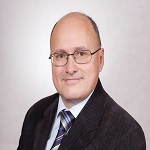
Title: Progress in Thermoplastic Adhesives and Gluing Technologies in Woodworking Industry
Keynote
Dr. Tomasz Krystofiak
Poznan University of Life Sciences, Poland
Abstract
Based on many years of own research on thermoplastic adhesives used in the woodworking industry, trends in the development of bonding agents were showed. Novelties in polyvinyl acetate (PVAC) and hot melt (HM) adhesives based on various thermoplastic polymers were presented. The problem of adhesion of adhesives in joining various materials, e.g. foils, laminates, edges with wood based materials, were presented in a special way.
The causes of inadequate adhesion and methods of surface activation (adhesion promoters, corona discharge, plasma treatment) were discussed. Innovative technologies for the woodworking industry (laserTec and airTec), surface profile wrapping of board elements, as well as for the cladding and finishing of MDF boards in 3D presses were presented.
In conclusion, innovative methods for evaluating the adhesion strength and wettability of cladding materials to various substrates were showed.
Biography
Dr. Tomasz Krystofiak in 1994 was finished study of Faculty of Wood Technology at Agriculture Academy in Poznan. In 2002 he prepared a PhD dissertation and in 2019 habilitation. Author or co-author of more than 300 scientific publications in the scope of gluing and finishing of wood and wood based composites. To his research activities belongs surface phenomena, wettability, adhesion and adherence, modification, gluability and paintability of lignocellulosic materials. He was a Management Committee Member of COST Actions FP1006 and CA15216 and Working Group Member (FP1303 and FP1407). Since 2021 Guest Editor in 6 Special Issues in Coatings, Forests, Materials journals.

Title: Dark Matter The Solution
Plenary
Dr. Glenn Tony Manuel Barrera
Barrera Science Lab, Sweden
Abstract
We reveal the dark matter using Albert Einstein’s Special theory of Relativity with Albert Einstein’s famous formula for energy , mass , and velocity through inserting an equation Einstein's proper mass, energy and (rotation) velocity an equation often referred to the Galaxy equation together with keplerian rotation velocity, this is the observed mass, that is generally valid , for both galaxies and planetary systems, after this procedure we gain the actual mass of this gravitational system, thereafter we can also calculate the actual measure of both darkmatter and ordinary matter in percentage. now we get conservation of energy with proves the theory and proofs to be correct. As a prototype we calculate the restmass of the Milkyway galaxy, but the theory is generally completely solved.This theory and solution was first founded as a Generalization of The Theory Of Relativity (A. Einstein 1905,1915) and presented , 2013, 2014, 2015 (Barrera/Thelin) in IOSR - Organiztion of Scientific Research, Applied physics. Complex Quantum Relativity, 2022 "The Universe" (T.Barrera) and (October 2022 - 20/21) in 5:th Global webinar in Applied Science , T. Barrera , “Mathematical models in Science , Quantum Relativity” . We use SI units.
Biography
Dr. Glenn Tony Manuel Barrera is a certified autodidact math genius. He have published more than 39 papers In different subjects, scientific papers in computer graphics, numerical analysis, astrophysics Particle physics and mathematics. Tony does research together with profEwertBengtsson, Prof Anders Hast and Physicist Bo Thelin.
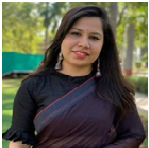
Title: Natural Beauties that can Kill
Speaker
Dr. Aaeen Alchi
Gujarat University, India
Abstract
Nature is impressive; the natural beauties in this topic are plants. Plants have played a broad role in the life of organisms, but did you know that they can kill too? Some plants are silent weapons capable of destroying life mysteriously, secretly and without violence. These have played a large part in romance as well as in crime. Since ancient times these toxic plants have been used by criminals in burglary, rape and murder cases. Many cases are available where these poisonous plants cause severe problems and even death. These plants are the choice of professional criminals as they are readily available and have no cost. In this session, we will discuss some toxic and poisonous plants near us, which are generally used by criminals to commit crimes.
Biography
Dr. Aaeen Alchi has a PhD. in Forensic Science from the School of Sciences, Department of Forensic Science, Gujarat University, Ahmedabad. She was a former Assistant Professor of the Forensic Department at Parul University, Baroda. She has organized various workshops and seminars at Parul University. Her academic journey includes a master’s in forensic science and a bachelor’s in Chemistry. She has five publications in International science and research journals and one book. In addition, she has organized various workshops and conferences during her research period. Furthermore, she has been serving as the guest faculty at Gujarat University. Research Area: Forensic Chemistry, toxicology, green chemistry, nanotechnology, anthropology, forensic document examination.

Title: Evaluated Vitamin D3 Levels among Regular and Frequent Alcoholic Dependents; An Prospective Observational Study
Keynote
Dr. Basavarajaiah D.M
Karnataka Veterinary Animal and Fisheries Sciences University (B), India
Abstract
The present study aims to determine Vitamin D3 levels among regular and frequent alcoholic dependents in order to identify different health problems. Study was carried out in Bangalore's tertiary health care hospitals. Asper the WHO recommendation; the patients were divided in two groups viz Group 1 (n=153) and Group 2 (n=98). A total 251 patients of which chronic (64.44%) and frequent (35.55%) alcohol dependents were taken. The data were compiled by R-statistical tool; Z and chi-square tests were employed to prove the hypothesis. The group 1 shows significant correlation (p<0.001; Hz 3.61) between different diseases and health complications as compared with control population (Group 2). Health complications like alcoholic fatty liver diseases (12.95% hz 3.80%), cirrhosis (2.61% hz 1.69), acute kidney injury (1.31%,hz ),bone nourishment (0.65%, hz ), addictive behaviour (3.27%, hz ), osteomalacia (1.96%,hz 3.30), osteoporosis and osteopenia (3.27%, hz 3.88 ), alcoholic myopathy (3.92%, hz 2.88), skin cancer (1.31%,hz <1.0 ).The body mass index (BMI) did not differ statistically (P > 0.05) between the two groups with mean age of 49.55 years with SD 2.33 (CI 95% 44.98-54.11years). The patients were assessed using both the prior and posterior data sets. According to the results, there are three income groups; low income (78.0%), mid income (12%) and high income (10%). According to the data, several diseases and illnesses were substantially more prevalent among the lower and middle class population, where regular alcohol dependents are more likely to experience health complications. In conclusion, since alcoholic addiction is now more prevalent in rural areas and among illiterates, the government must act rapidly and enforce the updated strategy to stop alcohol addictions into effect. This research will also help to the physicians in their clinical decisions about the patients.
Biography
Dr. Basavarajaiah D.M working as an Associate Professor and Head , Department of Statistics and Computer Science, Dairy Science College, Karnataka Veterinary Animal and Fisheries Sciences University (B), Hebbal, Bangalore. My area of research heeds Statistical theory, Statistical modelling on high dimensional datasets of Agriculture, Engineering, Medicine, Veterinary and animal Sciences. Penned sixty eight research articles and five academic books. Serving as an editorial Board Member and Scientific Board advisor of Various International indexed journals. Life Member of various academic organizations. Honoured several accolades for my academic and research Excellency “Chartered Scientist award stalwart by Science Council, United Kingdom in Collaboration with Royal Statistical Society. Best Reviewer award -2016 ‘TRANS STELLAR’ Journal Publications and Research Consultancy ,TJPRC Ltd., (NAAS rated Journals), Fellow of Royal Statistical Society ,UK (London), Fellow of Mathematical Society ,UK (London), Bharathshikshratana and Indo-Dubai Achiever’s Pacific award honoured by Global Society of health and educational growth new Delhi, Best reviewer -2015, Best scientific Board advisor - 2016 and Best editorial Board Member awards bestowed by International academy of Engineering Science and Technology (IASET),USA.
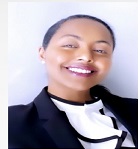
Title: 6 Lessons - How to make an Impact on your Data Science Journey
Speaker
Miss. Samrawit Feleke
Data Scientist, United States
Abstract
In this talk, Miss. Samrawit Feleke will discuss the top lessons she have learned as a data scientist working with AI over the past six years. This will include developing strong technical skills, thriving in teams with non technical users and growing in the data science field. She will also discuss what she have learned about AI combining language and vision to create clear images from text descriptions which can be used to aid many people and become a powerful assistance tool.
Biography
Miss. Samrawit Feleke is passionate about unlocking the insights found in structured and unstructured data. She enjoys discovering and communicating analytics results, drawing on her experience in statistical analysis, machine learning and data visualization using R and Python. Samrawit has completed her BA from the University of Virginia and MS in Data Science from George Washington University. She has worked as a Data Scientist since 2017.
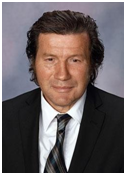
Title: Smart Tomorrow
Plenary
Prof. Dr. Eduard Babulak
National Science Foundation, USA
Abstract
Given the current dynamic developments in the field of New Materials, AI, Smart Medicine, and Humanoid Robotics, with the ubiquitous access to high-speed Internet 24/7, the Ultra-smart Cyberspace is becoming reality.The Smart Computational Systems are collecting, processing and analyzinga real-time medical data utilizing the Electronic Health Record (EHR) to fast treatment, prevention and healing of the wave of new viruses and diseases and ultimately safe human lives.
The areas of research in the field of AI & Humanoid Robotics create a new platform for tele-Medicine utilizing new biomechanical humanoid devices. In light of currently ongoing developments of Covid-19 crisis, having effective real-time application of Ultra-smart Cyberspace, with applied AI & Robotics and Big Data will supportcritical live saving surgeries in Next generation tele-Medicine [6].
Due to Covid-19, the humanity lives in the most dramatic times, yet despite of its most negative impact it does also inspire dynamicinnovation, research and developments in the world of health,business, government, industry, plus., while promoting seamless creation of multidisciplinary teams of experts in the nation and worldwide.
The author discuss the current and future dynamic trends in research, innovation and developments of New Materials, AI, Smart Health, and cutting-edge Humanoid Robotics that would provide support to save lives and to make best real-time decisions worldwide.
Biography
Prof. Dr. Eduard Babulak is an accomplished international scholar, researcher, consultant, educator, professional engineer and polyglot, with more than thirty years of experience. He served as successfully published and his research was cited by scholars all over the world. He serves as Chair of the IEEE Vancouver Ethics, Professional and Conference Committee. He was Invited Speaker at the University of Cambridge, MIT, Purdue Speaker Photo University, Yokohama National University and University of Electro Communications in Tokyo, Japan, Shanghai Jiao Tong University, Sungkyunkwan University in Korea, Penn State in USA, Czech Technical University in Prague, University at West Indies, Graz University of Technology, Austria, and other prestigious academic institutions worldwide. His academic and engineering work was recognized internationally by the Engineering Council in UK, the European Federation of Engineers and credited by the Ontario Society of Professional Engineers and APEG in British Columbia in Canada. He was awarded higher postdoctoral degree DOCENT – Doctor of Science (D.Sc.) in the Czech Republic, Ph.D., M.Sc., and High National Certificate (HNC) diplomas in the United Kingdom, as well as, the M.Sc., and B.Sc. diplomas in Electrical Engineering Slovakia. He serves as the Editor-in-Chief, Associate Editor-in-Chief, Co- Editor, and Guest-Editor. He speaks 16 languages and his biography was cited in the Cambridge Blue Book, Cambridge Index of Biographies, Stanford Who’s Who, and number of issues of Who’s Who in the World and America.
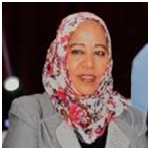
Title: BIOREMEDIATION OF PETROLEUM CONTAMINATED SOIL BY USING Saccharomyces cerevisiae - A LOW-COST NATURE’S BIOTECHNOLOGY FOR ENVIRONMENTAL CLEAN UP
Keynote
Dr. NouraKaramalla Mohamed Salih
Infrastructure University Kuala Lumpur, Malaysia
Abstract
The increase in demand for petroleum as a source of energy and as a primary raw material forindustries has resulted in an increase in its production, transportation and refining, which in turn has resulted in gross pollution of the environment and soil. Due to its hydrophobic characteristics and slow process of biodegradation, petroleum can remain in the environment for a long time and its toxicity can affect negatively the impact on human, animals and aquatic ecosystems due to its carcinogenic potential. The objective of this study is to solve the chronicenvironmental contamination by oil, conventional treatment techniques and bioremediation as an alternative tool for recovery of petroleum-contaminated soils. It is widely known that the main organismsresponsible for decomposing petroleum in bioremediation are bacteria and fungi. Therefore, this paper investigates the use of Saccharomyces cerevisiae to eliminate the Total Petroleum Hydrocarbons (TPH) from soil that has been contaminated by crude oil in the lab to determine its potential to degrade petroleum hydrocarbons at 30°C for a period of 28 days under aerobic condition. The soil samples were analysed by using the EPA method from start and the end of the experimental periods using spectrophotometer. At the end of 28 days petroleum degradation was recorded. During the 28 days of incubation, the absorbance in the control is constant (0.27), when adding 1% yeast shows that there is a decrease in the absorbance to (0.15) TPH is 916.67 mg/L,; while the 2% yeast shows that the absorbance is lowered to (0.036) TPH is 750mg/L. The results showed that TPH removal from the soil utilising the Saccharomyces cerevisiaewas more successfully accomplished during the aforementioned amount of yeast added
Biography
Dr. Noura Karamalla Mohamed Salih is an Associate Professor. She is currently working as a Senior Lecturer at Infrastructure University Kuala Lumpur (Malaysia). She received her Ph.D. from University of Khartoum (Sudan) in 1997. Peer reviewer for eight journals and editorial board member in five Journals. Her research interests in the following areas: Microbiology, Molecular Biology and Biotechnology (Fermentation & Bioremediation).

Title: Will be updated soon
Keynote
Dr. Biao Hu
Shenzhen University, China
Abstract
Will be updated soon
Biography
Dr. Biao Hu is currently an Assistant Professor at the College of Civil and Transportation Engineering, Shenzhen University, P.R. China. He obtained his Ph.D. from the City University of Hong Kongin 2017. His main research focuses on composite materials & structures, structural retrofitting, and sustainable construction materials. He has published some40 technical papers in international journals and conference proceedings (including 32 SCI papers), and these worksreceived more than 690 citations recorded in Google Scholar. He is the principal investigator of 4 research projects and the co-investigator of more than 10 research projects. He serves as the editorial board member of several journals (Journal of Civil, Construction and Environmental Engineering,Building Technology Research and Construction Progress) and the guest editor of an SCI journal (Polymers). He is a regular reviewer of more than 30 peer-reviewed international SCI journals. He received the Moisseiff Award from the American Society of Civil Engineers (ASCE) in 2018.
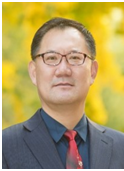
Title: A Nonlinear Attachment-Detachment Model with Adsorption Hysteresis for Suspension-Colloidal Transport
Speaker
Prof. Bing Bai
Beijing Jiaotong University, China
Abstract
The transport and deposition of substances, such as soluble ions, heavy metal pollutants, bacteria, and suspension-colloidal particles(SPs), in porous media is an important yet challenging topic in environmental geotechnics. A nonlinear attachment-detachment model with adsorption hysteresisis proposed, which uses an adsorption function and scanning desorptionisotherms to model the deposition effect of SPs. The reactionrate constant related to hysteretic characteristics essentially reflects thenonequilibrium hydrodynamic process during the transport of SPs.Static deposition tests and column experiments with pulse injection areused to calibrate the transport parameters.Column penetration experiments are performed under variable injectionconcentrations and seepage velocities. The results show thatthere is good agreement between simulated and experimental breakthrough curves(BTCs).When the injection concentration is increased, the effluent concentrationclearly increases, which actually reflects a nonlinear depositionprocess. In contrast, with a decrease in the injection concentration, therelease effect of the already deposited SPs prolongs the penetrationprocess, which is also related to the hysteresis. Previously proposedlinear attachment-detachment models probably result in an overestimationof the adsorption capacity of porous media.Studies show that increasing the seepage velocity enhances thereaction rate constant between SPs and the porous medium matrix andsimultaneously strengthens the hydrodynamic force acting on SPs,which actually promotes the movement of SPs along the flowing water.For small particles, the reaction rate constant is the dominant factor.Nevertheless, for large particles, the hydrodynamic force plays an importantrole, except for the hysteretic effect caused by the collisionsbetween SPs and between SPs and the solid matrix.
Biography
Prof. Bing Bai is working at Beijing Jiaotong University, China. He holds a Ph.D. in Geotechnical Engineering from Wuhan University, China. His research interests include geo-environmental engineering, thermal consolidation theory, contaminant transporttheory and control method. Recently, he devoted himself to advances in soil pollution and the geotechnical environment. He developed a theory describing the cotransport of heavy metals and suspended particles at different temperatures in porous media and proposed a nonlinear attachment-detachment model with hysteresis suitable for the substances with sizes ranging from ions to large particles, which is of great significance in groundwater pollution mechanism and purification technology.
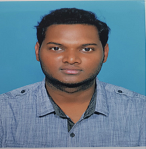
Title: Effects of High-speed Homogeniser Pre-Treatment Technique in Lipid Extraction on Wet Microalgae for Biodiesel Production
Speaker
Mr. Amarnath Krishnamoorthy
University of the West of Scotland, UK
Abstract
Biodiesel is an environmentally friendly fuel source with similar combustion qualities comparable to regular diesel. Microalgal biodiesel has recently attracted global attention and interest for researchers because of the fact that they are sustainable, renewable and non-toxic. In this research, using microalgae Nannochloropsis oculata, cell disruption was carried out using a high-speed homogeniser (HSH) pre-treatment technique, and lipid extraction was done using a mixture of deep eutectic solvents like methanol and hexane. Different operating input factors of HSH were examined on the microalgae to study their effective cell disruption rate and lipid efficiency. The result showed that an enhanced lipid yield of 40.56% was obtained from N.oculata, and thus, this study attempted to imply that the cell wall of the microalgae was fully ruptured, permitting the solvents to diffuse and recover lipids. The significant components of biodiesel characterisation were discovered using gas chromatography analysis, which concluded that this could be employed as a feedstock in biodiesel production.
Biography
Mr. Amarnath Krishnamoorthy is doing his PhD in biomass conversion to energy at the School of Computing, Engineering & Physical Sciences, University of the West of Scotland (United Kingdom). His research explores the implementation of pre-treatment methods in microalgal species for cell disruption, and his research added value to the third generation of biofuels. His dissertation deploys recent studies of microalgal pre-treatment in biodiesel production and literature and leads questions about the upcoming phases of dewatering approaches and research exploration.
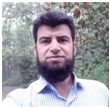
Title: Attitude Control of a Small SpaceCraft using Reconfigurable Embedded Magnetorquers
Keynote
Dr. Anwar Ali
Zhejiang Sci-Tech University, China
Abstract
The nanosatellite market is rapidly growing forscientific and commercial applications. The main reason isthe availability of low-cost commercial off-the-shelfcomponents and already-developed subsystems in themarket. This evolution also enabled many universities andsmall and medium-sized enterprises (SMEs) to developtheir own satellites. The problem with small satellites is the available spaceand weight constraints for housing a large number ofrequired subsystems, such as power, attitudedetermination and control, telecommunication, andpayload. The ultimate solution is to make all subsystemssmaller and lighter. Attitude control system orientate the satellite in space to rotate solar panels towards Sun and antennas towards ground station. Normally permanentmagnets, reaction wheels, and magnetic rods are used for this purpose, but their price, weight, and size make themincompatible with small satellites. In this conference, we are going to discuss innovative embedded attitude actuators called embedded magnetorquers, which are inserted in theinternal layers of the power management PCB (printed circuit board) of small satellites. The resultant system is very light, reconfigurable andoccupies no extra space on the spacecraft.
Biography
Dr. Anwar Ali received his M.S.degree in electronic Engineering and Ph.D. degree in Electronic and Communication Engineering from Politecnico di Torino, Italy in 2010 and 2014, respectively.During PhD, he worked on AraMiS (Italian acronym stands for modular architecture of small satellites) project which was a joint venture between Politecnico di Torino, MIT (Boston, USA), Spin Electronics, Skytechnology and NeOhm. Since March 2019, he is working as Associate Professor at the School of Information Science and Technology, Zhejiang Sci-Tech University, Hangzhou, China. He has published43 research papers in renowned journals and conferences around the globe and has completed 5 research projects as Principle Investigator (PI). He has also completed 2 projects as co-PI and has worked in many projects as group member. His research interests include power electronics, analog and mixed signal circuits,RF/microwave front end & antenna design, small satellites(power management, attitude determination & control systems), thermal modeling & thermal analysis of aerospace systems and EMI & EMC issues in electronic systems.
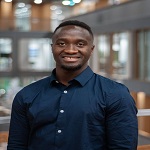
Title: The application of face recognition algorithm to significantly improve security
Speaker
Mr. Maliki Fofana
Vrije Universiteit Amsterdam, Netherlands
Abstract
Face recognition algorithms are computer algorithms that are designedto identify and verify individuals from digital images or video. These algorithms are widely used in a variety of applications, including security and surveillance, identityverification, and social media tagging.
One common use of face recognition algorithms is in security and surveillance systems, where they can be used to identify individuals in real-time or from footage of past events. This can help to prevent crime and improve public safety. Another application of face recognition algorithms is in identityverification, where they can be used to confirm a person's identity when accessing sensitive information or facilities. This can help to prevent identity fraud and protect against unauthorized access. Finally, face recognition algorithms are also commonly used in social media platforms to automatically tag individuals in photos and videos. This can help users to easily organize and search through their media collections, as well as to connectwith friends and family online.
Overall, the application of face recognition algorithms has the potential to significantly improve security and convenience in a wide range of settings. However, there are also concerns about the potential for abuse and privacy violations, and it is important for developers and users to carefully consider the potential risks and benefits of these algorithms.
Biography
Mr. Maliki Fofana, is a 22-year-old, and he lives in Amsterdam, Netherlands. He works as a teaching assistant at the Vrije Universiteit Amsterdam, where he is also involved in research on machine learning applications. In his role as a teaching assistant, he helps students understand course material and provide support to professors. His research focuses on exploring and developing new ways to apply machine learning techniques to various fields, such as healthcare, finance, and education. Outside of his work and studies, he enjoys staying active and exploring the city. He enjoys running, playing football, and running, and loves to discover new neighborhoods and try different restaurants and cafes. He was also an avid reader, with a particular interest in philosophy and action novels. Overall, he is a dedicated and hardworking individual with a passion for learning and advancing his knowledge and skills. His work as a teaching assistant and researcher allows him to contribute to the academic community and make a positive impact in the world.

Title: Deaths Due to Electrocution: An Evaluation of Death Scene Investigations and Autopsy Findings
Speaker
Dr. Brittani Smith
Oklahoma State University, United States
Abstract
The purpose of the study was to delineate the epidemiological characteristics of electrocution deaths in Maryland, identify any potential risks, and address preventive measures. A retrospective review of all the deaths due to electrocution was conducted at the Office of the Chief Medical Examiner in the State of Maryland from 2005 to 2015. During the 11-year period, a total of 55 electrocution deaths were identified from the autopsy cases at the statewide medical examiner system. More males died of electrocution than females with its ratio of (M: F) = 9:1. Of the 55 cases, 67.3% were White, 18.2% were African-American, 12.7% were Hispanic, and 1.8% were other races. The age of the victims ranged from 4 to 83 years with mean age of 40 years. >96% deaths due to accidents and 3.4% were suicide. The majority of deaths (70.9%) were caused by high-voltage circuits. Approximately 64% of fatalities were work-related accidents. The study indicated that electrocution deaths frequently affected young male workers who were in contact with a high-voltage currents while on the job. The detailed death scene investigation and autopsy findings are presented. The potential hazards of electricity must continue to be addressed in public safety campaigns to prevent such deaths. Strategies should ensure safe work environments for any contact with electric currents.
Biography
Dr. Brittani Smith has completed her Bachelor of Science degree in Biology from Claflin University in 2016. She has also completed her Master of Science degree in Forensic Medicine from the University of Maryland, Baltimore in 2017. She recently completed her Doctor of Forensic Science degree from the Oklahoma State University. Dr. Smith has previously worked as an instructor of Anatomy and Physiology for two colleges and prior has experience performing forensic autopsies at the Office of the Chief Medical Examiner in Baltimore, Maryland. Her research on electrocution has been presented at the International Conference of Evidence Law and Forensic Science (ICELFS) and has been published in the Journal of Forensic Science and Medicine. She is also a member of the International Association for Identification.
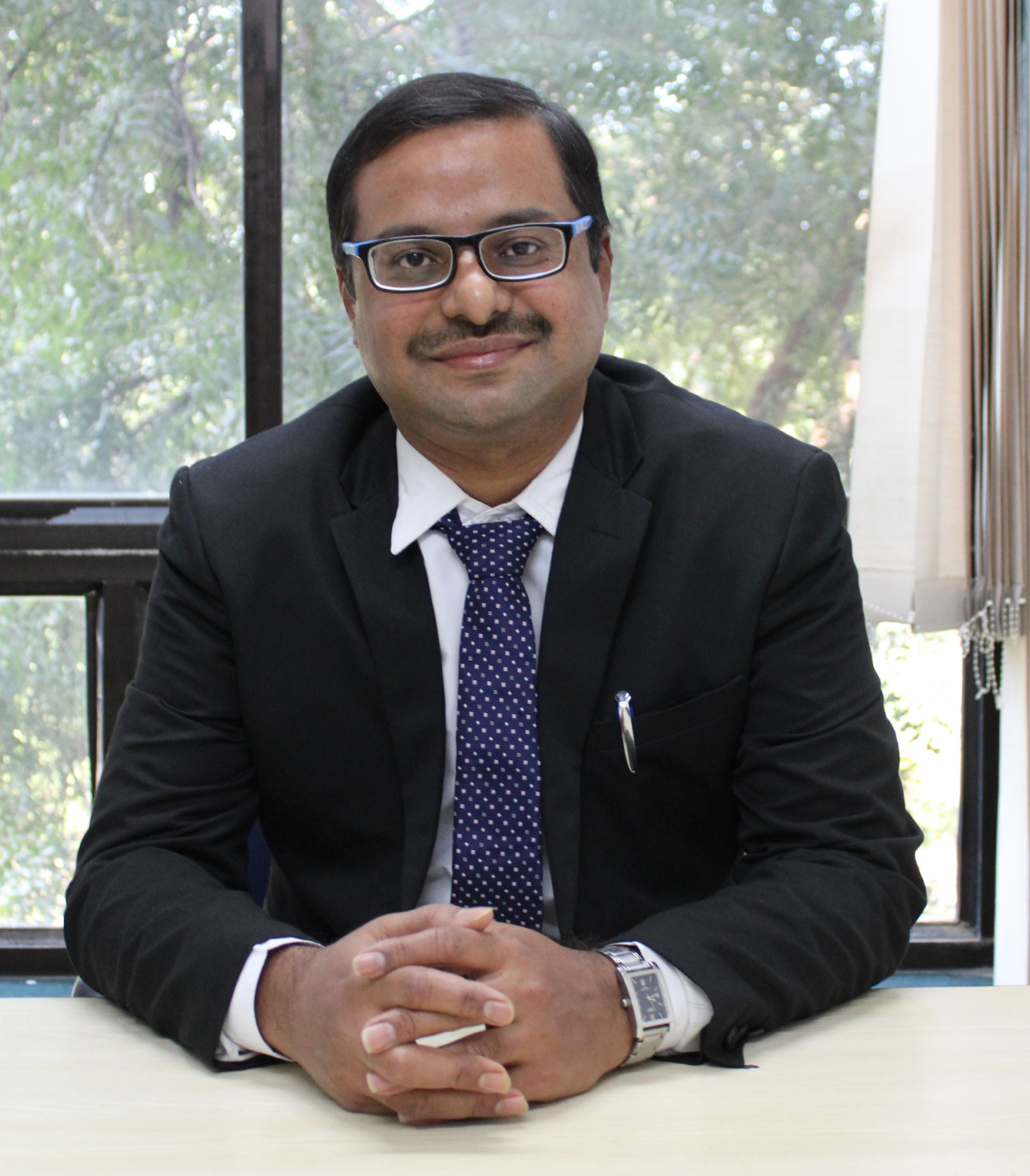
Title: Smart Sustainable Technology
Keynote
Dr. Sailesh Iyer
Rai University, India
Abstract
Will be updated soon
Biography
Dr. Sailesh Iyer has a Ph.D. (Computer Science) and currently serving as a Professor with Rai University, Ahmedabad. He has more than 22 years of experience in Academics, Industry and Corporate Training out of which 18 years are in core Academics. A hardcore Academician and Administrator, he has excelled in Corporate Training, Delivered Expert Talk in various AICTE sponsored STTP’s, FDP, Reputed Universities, Government organized Workshops, Orientation and Refresher Courses organized by HRDC, Gujarat University. Research Contribution include reputed Publications, Track Chair at ICDLAIR 2020 (Springer Italy), icSoftComp 2020, IEMIS 2020 (Springer), ICRITO 2020 (IEEE) and TPC Member of various reputed International and National Conferences, Reviewer of International Journals like Multimedia Tools and Applications (Springer), International Journal of Big Data Analytics in Healthcare (IGI Global),Journal of Renewable Energy and Environment etc., Expert Talk on Research based topics in various Universities and Conferences in addition to guiding Research Scholars as Supervisor. He has also been invited as a Judge for various events, Examiner for Reputed Universities, is a Computer Society of India Lifetime Member and also serving as Managing Committee (MC) Member, CSI Ahmedabad Chapter since last 2 years. Research interest areas include Computer Vision and Image Processing, Cyber Security, Data Mining and Analytics, Artificial Intelligence, Machine Learning.

Title: On a Bivariate Successive Substitution Spectral Method for Unsteady Mixed Convection Boundary Layer Flow, Heat and Mass Transfer due to a Stretching Surface in a Rotating Fluid
Speaker
Ms. Louisah Namarare
Applied mathematician, UAE
Abstract
Most world problems which include industrial, biological and engineering prob-lems, present themselves in the form of non-linear partial differential equations. The characteristics of physical systems are exhibited by non-linear equations. Modelling natural physical systems using complex non-linear partial differential equations is complicated since it is difficult to obtain exact explicit solutions. Here, we look at fluid models involved in industrial processes over stretching surfaces. The phenomenon of unsteady mixed convection boundary layer flow has been considerably studied by many. The studies of these phenomena have been devoted to a lot of applications subject to different conditions. Here, a new iteration method which converges faster will be introduced. The applica- tion of a pseudospectral method to solve coupled non-linear system of partial differential equationsmodelling boundary layer flow over a stretching surface in a rotating fluid will be demonstrated. Important flow properties such as lo-cal skin-friction coefficient, heat and mass transfer rates will also be put into consideration. Validation of the method will be conducted using convergence graphs.
Biography
Ms. Louisah Namarare is an applied mathematician. She has completed her MSc in Mathematical Sciences from the African Institute for Mathematical Sciences, South Africa. She has been working as a math teacher in Zimbabwe previously. Now she works at a local tutoring institute in UAE. Her main interests are in research particularly in Computational Math and its applications as well as Data Science.
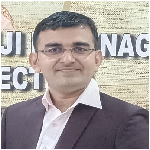
Title: Study of Longitudinal Surface Roughness on Performance of Magnetic Fluid based Hydrodynamic Circular Foot Step Bearing Considering the Slip Velocity
Speaker
Dr. Hardik Mahashankerbhai Pandya
Ganpat University – Mehsana Urben Institute of Science, India
Abstract
The study of longitudinal surface roughness on performance of magnetic fluid based hydrodynamic circular foot step bearing considering the slip velocity. The velocity slip is modelled by the method of Beavers and Joseph. The stochastic model is used for surface roughness. The equation for radial flow rate is solved to obtain the expression for pressure. Which is then used for calculation of load carrying capacity. It is discovered that non-dimensional slip velocity, inner radius, variance and skewness are responsible for significant decrease in the load carrying capacity of the bearing. However in the case of non-dimensional standard deviation, the load carrying capacity is increased
Biography
Dr. Hardik Mahashankerbhai Pandya has completed his PhD from the Department of Mathematics, M. K. Bhavnagar University of Bhavnagar, India. He has been working as a Assistant Professor of Ganpat University – Mehsana Urben Institute of Science since March, 2022. He has published more than 5 papers in reputed journals and has been serving as assistant professor in Saraswati Master of Sciece Collage, and as visiting faculty at the Department of Mathematics, M. K. Bhavnagar University of Bhavnagar, India.

Title: Meta-Modeling for Response Estimation of Stochastic Nonlinear Multi-degree-of-freedom Structural Dynamic Systems Using MIMO-NARX Models
Speaker
Mr. Menghui Chen
Southeast University, China
Abstract
Complex dynamic behavior of nonlinear structures makes it challenging for uncertainty analysis through Monte Carlo simulations (MCS). Surrogate modeling presents an efficient and accurate computational alternative for a large number of MCS. Previous researches have demonstrated that the multi-input multi-output nonlinear autoregressive with exogenous input (MIMO-NARX) model provides good discrete-time representations of deterministic nonlinear multi-degree-of-freedom (MDOF) structural dynamic systems. To investigate the influence of uncertainty propagation on system performance, the MIMO-NARX strategy is integrated with different meta-modeling techniques. Different meta-models including Kriging, polynomial chaos expansion (PCE), and arbitrary polynomial chaos (APC) are used to surrogate the NARX coefficients for system uncertainties. A nine-DOF structure is used as an MDOF dynamic system to evaluate different meta-models for the MIMO-NARX. Good fitness of statistical responses is observed between the MCS results of the original system and all surrogated MIMO-NARX predictions. It is demonstrated that the APC-NARX model with the advantage of being data-driven is the most efficient and accurate tool for uncertainty quantification of nonlinear structural dynamics.
Biography
Menghui Chen is a PhD candidate from the School of civil engineering, Southeast University, People's Republic of China. His research interests include seismic analysis and experimental technique of civil structures, real-time hybrid simulation, meta-model and data-driven technique. He has published 4 papers in SCI journals as the first author.
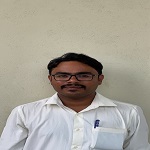
Title: An Alternative Solution for Single use Plastic in Ice-Cream Industry to Achieve Sustainability
Speaker
Dr. Pratap Kumar
Scientific Officer, State Forensic Science Laboratory, India
Abstract
It has taken the globe less than four decades to transform plastic from “marvel to menace,” as mentioned by National Geographic. Plastics are a broad category of synthetic or semi-synthetic materials that contain polymers as a primary component. The majority of modern plastics are made from chemicals sourced from fossil fuels such as natural gas or petroleum. Now that the ban on single-use plastic is the new normal, the direct impact of the ban will definitely reduces plastic waste, but it may also result in the loss of capital and important resources of Ice-cream industries, and it is at this point that we must consider the overall impact. Between 1950 and 2017, 9.2 billion tons of plastic are thought to have been produced. Since 2004, more than half of this plastic has been produced. 400 million tons of plastic were created in 2020. By 2050, it is predicted that yearly worldwide plastic production will exceed 1,100 million tons if current trends in plastic demand hold. So far, 14% of all plastic waste has been burned, with less than 10% recycled. These waste products frequently run into sewage systems, plugging the mouths of drain holes and causing a spill of murky water over the surface of the ground. Looking for alternative solution Ice-cream vending machine seems a good fit, is economical and preferred by people (as our snowball sampling study says) as this study checks and deals with the overall impact of using vending machines for ice creams, its impact on industry and most importantly consumer welfare. Our sample data only gives inferences of population of tier 1 & tier 2 demographics and might not hold for tier 3 demographics. Moreover the market research gives a lot of positive insights about this industry.
Biography
Dr. Pratap Kumar, Science & Arts Teacher, Scientist in Nano Science and Technology, WLEDs, Photoluminescence, Novel Photocatalysis, Preparation of Ultra Super Hydrophobic materials for day-to-day life, Textile designing and sustainable eco materials for packaging solutions, Scientific Officer in Criminal Justice with an Emphasis on Forensic Science at Firearms Section. Have 02 patents to the credit (Artistic mask to fight against Novel Corona Virus and Odor Masks designed for BBMP workers to fight coronavirus in a creative way) and 10+ patents (under process) have been filed and are in process of acceptance which reflects novel scientific temperament.
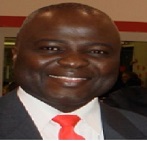
Title: Electroflotation Technology for Nickel Ions Removal from Effluents of the Battery Industry
Plenary
Dr. Peter Kofoworola Aarinola
Canadian Kraft Paper Industries Ltd, Canada
Abstract
The Pas, MB, Canada Novel electroflotation technology with dimensionally stable anodes (DSA) for pollution abatement and valuable material recovery in battery and other related industries has been discussed. Factors affecting the electroflotation process have been studied. Optimum operating parameters such as initial material concentration, pH value, oxidation-reduction potential, current density, time for process control have been established and equipment for running the process has been designed. Other areas of application of the technology have been identified.
Biography
Dr. Peter Kofoworola Aarinola is a Registered Professional Engineer, Adjunct University Educator, Consultant, Certified ISO QMS Auditor, an External R&D Collaborator, Subject Matter Expert (SME) with universities and research establishments within Canada and abroad. He was a Federal Govt. scholar. He holds an M.Sc. and Ph.D. degree in Chemical and Electrochemical Engineering, Post-Doctoral (D.Sc. Candidate) Research Fellow in Electrochemical/Biomedical Engineering, PostGraduate Certificate in Management, and a Master's Certificate in Project Management. He also obtained Certificates in Pedagogy and in Teaching Russian as a Foreign Language. Dr. Aarinola's professional career has taken him to various industries including education, oil & gas, automobile, defence & earospace, mining & metals, water treatment, renewable energy, pulp & paper, etc. He has been sitting on the Boards of Directors of some organizations. "
“ Will be updated soon...”
+91 9491 456 452
Door No.200, Immidhihalli Main Road, Whitefield-560066, Bangalore, India
About Us
Global Scientific Guild organizes conferences and webinars to promote quality research and real world impact in an atmosphere of true international co-operation between scientists, doctors, professors, practitioners, engineers and industry by bringing together the world class renowned personalities to discuss the latest developments and innovations at one common platform.